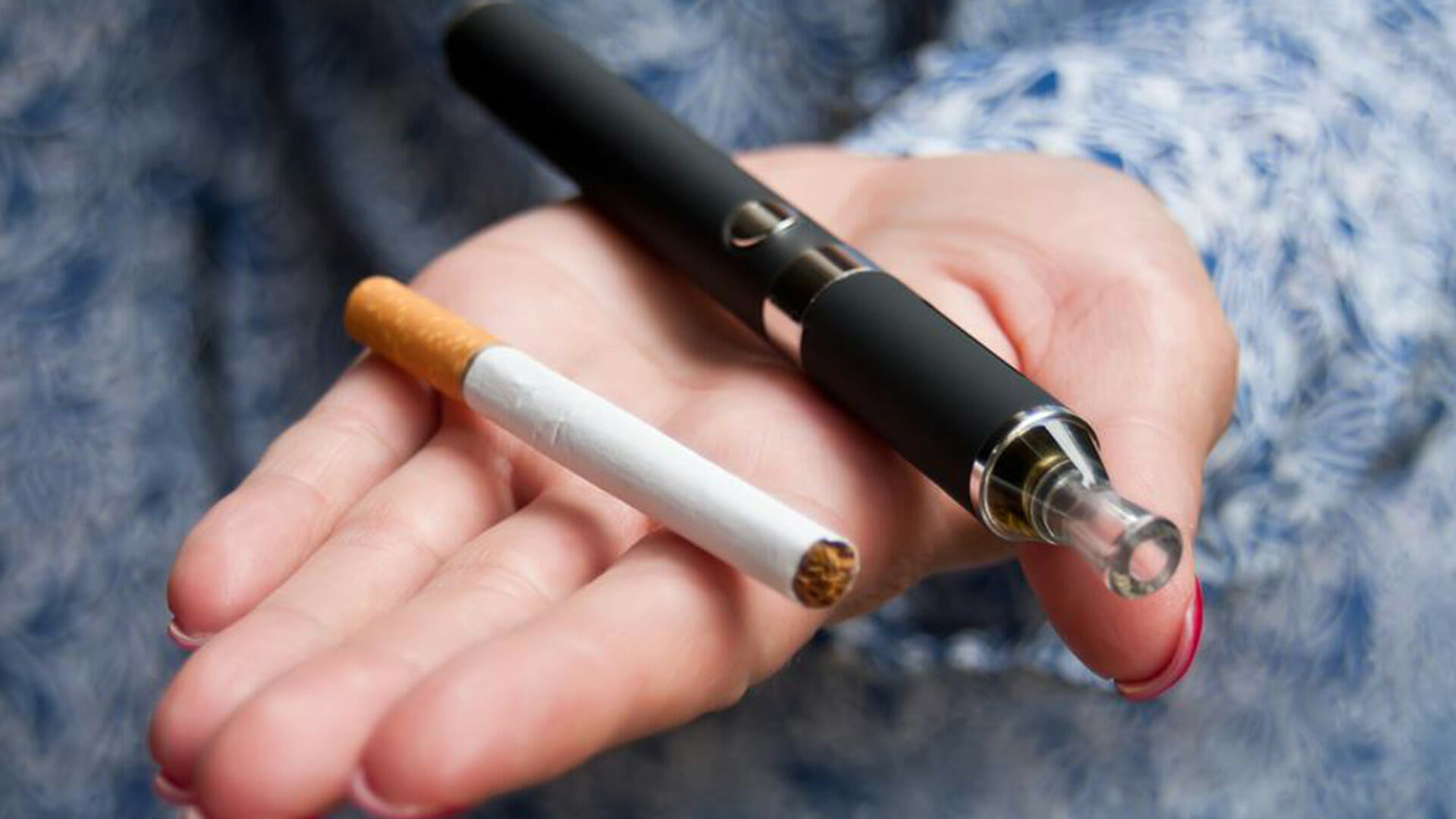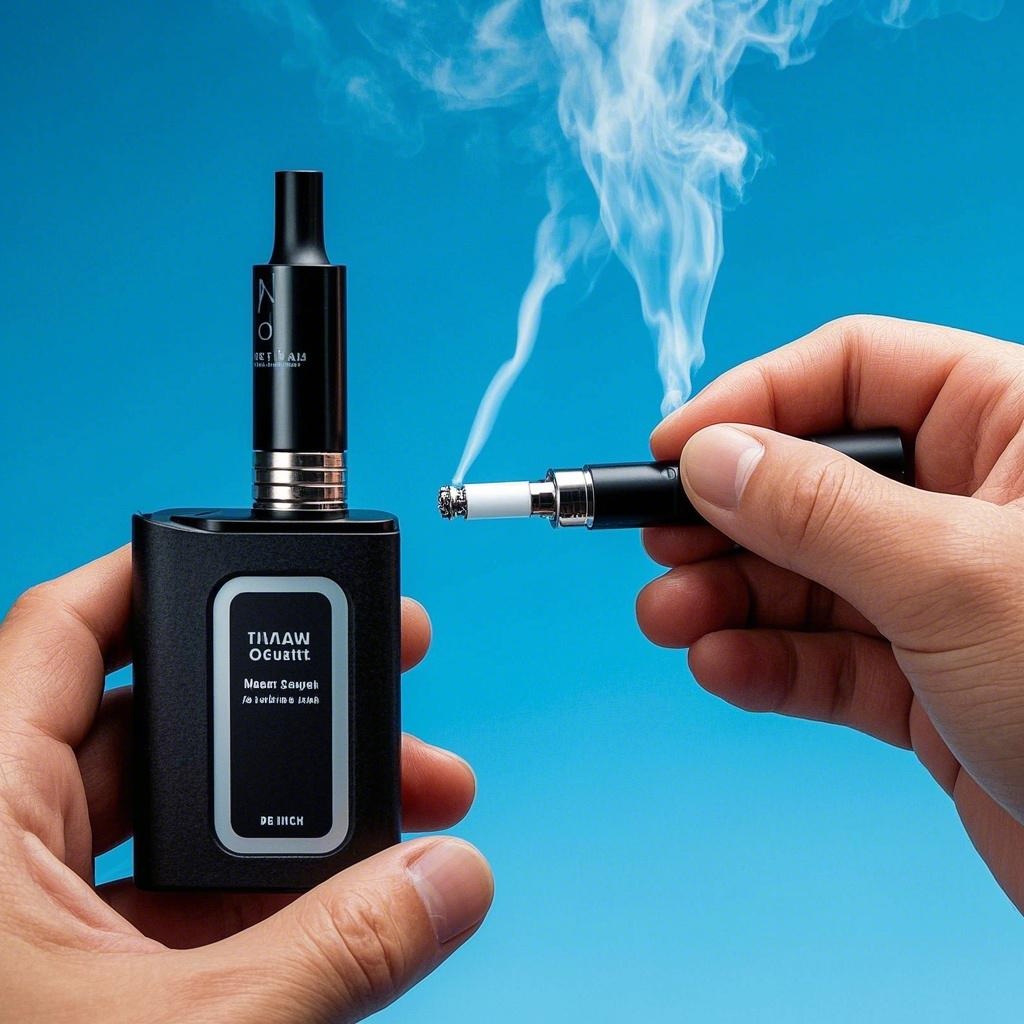E-cigarettes have gained widespread popularity as an alternative to traditional smoking, but concerns about their impact on health, particularly lung health, have also risen. While e-cigarettes may seem less harmful than conventional cigarettes, research indicates that they can still pose serious risks to the lungs. In this article, we will explore how e-cigarettes can cause lung damage, compare the risks with traditional smoking, and offer insights into how users can protect their lung health. By understanding these risks, e-cigarette users can make more informed choices about their usage and take steps to reduce potential harm.
How E-Cigarettes Cause Lung Damage
E-cigarettes work by heating a liquid (often called e-liquid or vape juice) that contains nicotine, flavorings, and other chemicals. When the liquid is heated, it produces an aerosol that the user inhales. While this aerosol is often marketed as a safer alternative to traditional cigarette smoke, it still contains potentially harmful substances that can cause lung damage.
Harmful Ingredients in E-Cigarettes
E-cigarette aerosols contain a variety of chemicals that can negatively impact lung health. Some of the most concerning ingredients include:
- Nicotine: Although nicotine itself is not directly responsible for lung damage, it is an addictive substance that can contribute to cardiovascular problems, making lung recovery more difficult.
- Propylene Glycol: This chemical is commonly used to create the vapor in e-cigarettes, but it can irritate the airways and cause respiratory issues.
- Acrolein: This chemical is formed when propylene glycol is heated, and it can cause lung damage by irritating the lungs and increasing the risk of chronic respiratory diseases.
- Formaldehyde: A known carcinogen, formaldehyde can be produced when e-liquids are heated to very high temperatures. It has been linked to severe lung damage and cancer.
How These Chemicals Affect the Lungs
When inhaled, these chemicals can enter the lungs and cause several adverse effects. The following table summarizes the potential risks associated with each substance:
| Chemical | Potential Lung Impact |
|---|---|
| Nicotine | Increases heart rate, constricts blood vessels, and reduces lung function. |
| Propylene Glycol | Can irritate the airways, leading to coughing, wheezing, and asthma-like symptoms. |
| Acrolein | Damages lung tissue and may contribute to chronic bronchitis and emphysema. |
| Formaldehyde | Irritates the lungs and increases the risk of lung cancer and other respiratory diseases. |
Lung Damage from Inhaled E-Cigarette Chemicals
The combination of these chemicals can lead to serious health risks, including lung inflammation, reduced lung function, and increased susceptibility to respiratory infections. Studies have shown that even short-term exposure to e-cigarette aerosol can harm lung tissue, making it more vulnerable to infection and chronic diseases.
Understanding how these harmful chemicals affect the lungs is crucial for users who wish to make informed decisions about their health. The long-term consequences of e-cigarette use on lung health remain a topic of ongoing research, but the current evidence strongly suggests that inhaling e-cigarette aerosols can cause significant damage over time.
Comparing Lung Damage from E-Cigarettes and Traditional Cigarettes
While e-cigarettes are often promoted as a safer alternative to traditional smoking, it’s important to understand that both products carry risks for lung health. In this section, we will compare how e-cigarettes and traditional cigarettes cause lung damage, highlighting the similarities and differences between the two.
Differences in Harmful Substances
Traditional cigarettes contain thousands of harmful chemicals, many of which are produced during combustion. These chemicals include tar, carbon monoxide, benzene, and formaldehyde, all of which contribute to severe lung damage and diseases like chronic obstructive pulmonary disease (COPD) and lung cancer. In contrast, e-cigarettes typically contain fewer harmful substances, as they do not involve combustion. However, as previously discussed, e-cigarette aerosol still contains harmful chemicals like nicotine, propylene glycol, and acrolein, which can also cause lung damage.
Similarities in Lung Damage Risks
Despite having fewer toxic substances, e-cigarettes can still cause significant harm to the lungs. Both e-cigarettes and traditional cigarettes introduce irritants into the respiratory system, leading to inflammation and potential damage over time. Chronic exposure to these irritants can lead to conditions such as:
- Chronic bronchitis: Both smoking and vaping can cause irritation of the airways, leading to inflammation and coughing.
- Reduced lung function: Both types of smoking can impair the ability of the lungs to exchange oxygen, making breathing more difficult over time.
- Increased risk of respiratory infections: The chemicals in both e-cigarette aerosols and cigarette smoke weaken the immune system in the lungs, making it easier for infections to take hold.
Long-Term Effects on Lung Health
While it’s clear that traditional smoking is extremely harmful to lung health, the long-term effects of e-cigarettes are still not fully understood. Current research suggests that while e-cigarettes may be less damaging than traditional cigarettes in terms of the number of harmful chemicals, they are not without risk. Studies have shown that even non-combustible nicotine can affect lung tissue and immune function. Moreover, some studies have found that long-term vaping can lead to chronic lung inflammation and an increased risk of respiratory diseases.
The table below summarizes the key differences and similarities between the lung damage caused by e-cigarettes and traditional cigarettes:
| Factor | Traditional Cigarettes | E-Cigarettes |
|---|---|---|
| Harmful Chemicals | Contains over 7,000 chemicals, many toxic | Contains fewer chemicals, but still harmful ones like nicotine, formaldehyde, and acrolein |
| Mechanism of Delivery | Combustion releases harmful particles and gases | Heating of e-liquid creates an aerosol (vapor) |
| Immediate Lung Effects | Irritates airways, causes coughing and wheezing | Can irritate airways and lead to similar symptoms |
| Long-Term Lung Health Risks | High risk of COPD, lung cancer, emphysema | Increased risk of lung inflammation and chronic bronchitis |
| Effect on Immune System | Weakens lung immune function, making infections more likely | May also weaken immune system and increase infection risk |
Conclusion: Are E-Cigarettes Safe?
While e-cigarettes might pose a lower risk for lung damage than traditional cigarettes, they are by no means safe. The long-term effects of e-cigarette use are still being studied, but evidence suggests that they can contribute to lung damage over time. Users should be aware that even though e-cigarettes may contain fewer toxic substances, the risks to lung health should not be underestimated.
Lung Diseases Caused by E-Cigarettes
While e-cigarettes are often marketed as a safer alternative to traditional smoking, they are not without health risks. Prolonged exposure to e-cigarette aerosol can lead to a variety of respiratory issues and lung diseases. In this section, we will explore the potential lung diseases that e-cigarettes can cause, supported by research findings and real-life case studies.
Potential Lung Diseases Linked to E-Cigarettes
E-cigarette use has been associated with several respiratory diseases, ranging from mild irritation to more serious chronic conditions. The chemicals found in e-cigarette aerosol, such as nicotine, propylene glycol, and formaldehyde, can cause inflammation and damage to lung tissue, leading to various health problems.
- Pneumonia: One of the most concerning lung diseases associated with e-cigarette use is pneumonia. Inhaling e-cigarette aerosol can introduce harmful substances into the lungs, leading to inflammation and infection. A study published in The Journal of Infectious Diseases found that e-cigarette use was associated with an increased risk of pneumonia, especially in individuals who had a history of smoking or pre-existing lung conditions.
- Bronchitis: Chronic exposure to e-cigarette aerosol can lead to chronic bronchitis, a condition characterized by inflammation and narrowing of the airways. This leads to symptoms such as persistent coughing, wheezing, and difficulty breathing. A study conducted by the American College of Chest Physicians found that e-cigarette use was linked to a higher incidence of bronchitis-like symptoms, even in non-smokers who had never used traditional cigarettes.
- Asthma: E-cigarette aerosol has also been found to exacerbate asthma symptoms. The chemicals in e-cigarettes can irritate the airways and trigger allergic reactions, leading to increased asthma attacks and worsening of pre-existing conditions. Research from the American Lung Association indicates that e-cigarette use can increase the frequency and severity of asthma symptoms, particularly in young people.
Research Data and Case Studies
Several studies have highlighted the negative effects of e-cigarettes on lung health, including their potential to cause or worsen respiratory diseases. A large study published in The Lancet Respiratory Medicine in 2020 found that individuals who vaped regularly had a significantly higher risk of developing chronic lung diseases, such as asthma, bronchitis, and emphysema, compared to non-smokers.
Another study conducted by the University of California observed that young people who vape are more likely to develop symptoms of chronic bronchitis, including persistent cough and phlegm production, than their non-vaping peers. The study found that over 40% of regular e-cigarette users reported having symptoms of chronic respiratory issues, compared to just 16% of non-smokers.
Additionally, case studies have shown that long-term e-cigarette users can develop conditions similar to “popcorn lung” (bronchiolitis obliterans), a serious and irreversible lung disease. This condition is associated with inhaling diacetyl, a chemical sometimes used in e-cigarette flavorings. Although many e-cigarette manufacturers have removed diacetyl from their products, the long-term effects of other chemicals in the aerosol are still a concern.
E-Cigarette and Increased Risk of Respiratory Infections
One of the major concerns with e-cigarette use is its effect on the immune system. The chemicals in e-cigarette aerosols can impair the lung’s natural defense mechanisms, making it easier for infections to take hold. Research conducted by the American Thoracic Society found that e-cigarette use weakens the lungs’ ability to fight off bacteria and viruses, increasing the risk of respiratory infections, including pneumonia, bronchitis, and even tuberculosis in some cases.
| Disease | Associated Risk | Research Findings |
|---|---|---|
| Pneumonia | Increased risk of infection due to weakened lung defenses | E-cigarette use linked to higher pneumonia incidence, particularly in those with pre-existing lung conditions. |
| Bronchitis | Chronic irritation and inflammation of the airways | Higher incidence of bronchitis-like symptoms in e-cigarette users, especially those with asthma. |
| Asthma | Exacerbation of asthma symptoms | E-cigarette use triggers asthma attacks and worsens pre-existing asthma symptoms. |
| Popcorn Lung | Irreversible damage to small airways in the lungs | Long-term vaping linked to development of bronchiolitis obliterans (popcorn lung) in some users. |
Conclusion: Long-Term Risk of Lung Diseases
Long-term use of e-cigarettes can increase the risk of developing serious lung diseases, including pneumonia, chronic bronchitis, asthma, and even irreversible conditions like popcorn lung. While more research is needed to fully understand the long-term effects of e-cigarettes on lung health, the current evidence strongly suggests that regular vaping can cause significant respiratory issues and weaken the lungs’ ability to function properly. Users should be aware of the potential risks and monitor their lung health, especially if they have a history of respiratory conditions or prolonged e-cigarette use.
Lung Health Monitoring Recommendations for E-Cigarette Users
Given the potential risks associated with e-cigarette use, it’s essential for users to monitor their lung health regularly. Regular health check-ups and early detection of any issues can help mitigate the long-term damage caused by vaping. In this section, we will outline key recommendations for e-cigarette users to monitor their lung health and seek medical attention when necessary.
1. Regular Lung Function Tests
One of the most effective ways to monitor lung health is through regular lung function tests, such as spirometry. These tests measure how much air the lungs can hold and how efficiently the air moves in and out of the lungs. E-cigarette users should consider getting a spirometry test every 6 to 12 months, especially if they experience symptoms such as coughing, wheezing, or shortness of breath.
- What to Expect: During a spirometry test, you will be asked to breathe in deeply and then forcefully exhale into a machine. The results will help doctors assess your lung capacity and whether your airways are functioning properly.
- When to Do It: If you experience persistent respiratory symptoms or if you’ve been vaping for an extended period, it’s a good idea to schedule a test even if you don’t have noticeable symptoms.
2. Lung Imaging (Chest X-ray or CT Scan)
For those who have been using e-cigarettes for several years or are experiencing more severe symptoms, lung imaging may be necessary. Chest X-rays or CT scans can provide a detailed look at the lungs, helping doctors detect any signs of lung disease, such as inflammation, scarring, or the development of conditions like chronic bronchitis or emphysema.
- Why It’s Important: Lung imaging can reveal structural changes in the lungs that may not be detectable through symptoms alone. This is particularly important for e-cigarette users who may not experience noticeable symptoms until significant lung damage has occurred.
- When to Do It: If you have a history of vaping for multiple years, or if you experience symptoms like persistent cough, chest pain, or difficulty breathing, consult with your healthcare provider about getting a chest X-ray or CT scan.
3. Monitor Symptoms and Lung Health Changes
E-cigarette users should regularly monitor any changes in their respiratory health. Symptoms such as chronic coughing, wheezing, shortness of breath, or chest tightness should be promptly addressed with a healthcare provider. Even if symptoms seem mild, they could indicate early signs of lung inflammation or damage.
- How to Track Symptoms: Keep a journal or use an app to track any respiratory symptoms, noting their frequency and severity. This can help identify patterns or changes over time, which will be useful during doctor visits.
- When to Seek Help: If symptoms persist for more than a week or worsen over time, schedule an appointment with a healthcare provider for further evaluation.
4. Avoid Exposure to Other Lung Irritants
While monitoring lung health is crucial, e-cigarette users should also take steps to reduce exposure to other harmful substances that could further damage their lungs. Avoiding secondhand smoke, pollution, and occupational hazards (such as working in environments with chemical fumes or dust) can reduce the strain on your lungs and prevent additional damage.
- Reduce Exposure: If you work in a high-risk environment, such as construction, manufacturing, or any other industry with airborne particles, consider wearing protective equipment and ensuring adequate ventilation.
- Protect Your Lungs: If possible, limit your exposure to secondhand smoke and avoid areas with high air pollution, which can aggravate respiratory issues.
5. Regular Doctor Check-ups
Routine doctor check-ups are essential for maintaining overall health, and they are especially important for e-cigarette users. Your doctor can provide personalized advice based on your vaping history, health conditions, and risk factors. Regular visits allow early detection of any issues and prompt intervention to address lung-related problems before they worsen.
- What to Discuss with Your Doctor: During check-ups, be open about your vaping habits, how long you’ve been using e-cigarettes, and any symptoms you’ve noticed. This information will help your doctor assess your risk and guide your lung health monitoring plan.
- When to See a Specialist: If you experience serious respiratory symptoms, your doctor may refer you to a pulmonologist or respiratory specialist for more detailed evaluation and treatment.
Conclusion: The Importance of Proactive Lung Health Monitoring
E-cigarette users need to take proactive steps to monitor and protect their lung health. Regular lung function tests, imaging, and symptom tracking are essential to detect potential lung damage early. Early intervention can significantly reduce the risk of developing chronic lung diseases. Users should also stay informed about their health, avoid additional lung irritants, and maintain regular check-ups with healthcare providers. By staying vigilant and addressing potential issues promptly, e-cigarette users can better manage their lung health and prevent long-term damage.
How to Reduce Lung Damage from E-Cigarettes
While e-cigarettes can pose significant risks to lung health, there are several measures that users can take to minimize these dangers. By adopting healthier habits, choosing quality products, and taking proactive steps to protect the lungs, e-cigarette users can reduce the likelihood of developing serious respiratory issues. In this section, we will discuss effective strategies to minimize the impact of e-cigarette use on lung health.
1. Reduce Vaping Frequency
One of the most effective ways to minimize lung damage from e-cigarettes is by reducing the frequency of use. The less often a person uses e-cigarettes, the lower the exposure to harmful chemicals that can damage the lungs. This can help reduce inflammation and the risk of developing chronic respiratory diseases over time.
- Gradually Cut Back: If you are an avid e-cigarette user, consider gradually reducing the number of puffs or the frequency of use each day. This can help minimize exposure to harmful substances while giving your lungs a chance to recover.
- Use as a Transitional Tool: For smokers who are using e-cigarettes as a smoking cessation aid, aim to progressively reduce both nicotine content and usage frequency until you are able to quit altogether.
2. Choose High-Quality, Safe E-Cigarette Products
Not all e-cigarette products are created equal. Choosing high-quality products from reputable manufacturers can help reduce the exposure to harmful chemicals commonly found in low-quality or counterfeit e-cigarettes. When selecting e-cigarette devices and e-liquids, consider the following:
- Check for Certifications: Choose products that are certified for safety and quality. Look for products that meet regulatory standards such as CE (European Union), FDA (United States), or other relevant safety certifications.
- Avoid Products with Harmful Additives: Steer clear of e-liquids that contain harmful additives such as diacetyl (linked to popcorn lung) or acetyl propionyl. Stick to e-liquids from trusted brands with transparent ingredient lists.
- Buy from Reputable Sources: Purchase e-cigarette products from well-known, established suppliers or licensed retailers to ensure that the products meet quality and safety standards.
3. Avoid Inhaling Excessive Smoke or Vapor
One of the primary risks associated with e-cigarette use is inhaling excessive amounts of aerosol, which can irritate the lungs and lead to respiratory issues over time. By moderating the amount of vapor inhaled and paying attention to your body’s signals, you can reduce the strain on your lungs.
- Pace Your Vaping: Avoid taking long, deep puffs or excessive inhales. Try to take smaller, shorter puffs to minimize the amount of vapor that enters your lungs.
- Take Breaks Between Vaping Sessions: Allow your lungs to recover by taking regular breaks between vaping sessions. This reduces continuous exposure to the chemicals in the aerosol and gives the lungs time to rest.
4. Consider Quitting Vaping or Seeking Medical Assistance
The best way to eliminate the risk of lung damage from e-cigarettes is to quit altogether. While this may be challenging, quitting vaping can significantly reduce the risk of developing chronic respiratory diseases. There are several resources available to help individuals quit vaping, including smoking cessation programs, therapy, and medications.
- Seek Help from Healthcare Providers: If you are struggling to quit, seek advice from your doctor or a smoking cessation counselor. They can provide personalized guidance and recommend treatment options such as nicotine replacement therapy (NRT) or prescription medications that can help you quit.
- Join Support Groups: Consider joining support groups or online communities where you can connect with others who are also working to quit. These groups can offer emotional support and practical tips for overcoming addiction.
5. Monitor Your Lung Health Regularly
As previously mentioned, regular monitoring of lung health is essential for e-cigarette users. By staying on top of your lung function, you can catch any early signs of damage before they progress to more serious conditions. Regular check-ups with your healthcare provider and periodic lung function tests are key to detecting lung issues early.
- Get Regular Lung Function Tests: As part of your health monitoring routine, consider getting spirometry tests and chest X-rays to check for any changes in lung health. These tests can help identify potential problems before they become severe.
- Be Proactive About Symptoms: If you notice any changes in your breathing, such as increased coughing, shortness of breath, or wheezing, seek medical attention right away. Early intervention can help prevent further damage to your lungs.
Conclusion: Taking Steps to Protect Your Lungs
While e-cigarettes are not without risks, there are steps that users can take to reduce their impact on lung health. Reducing the frequency of use, choosing high-quality products, moderating the amount of vapor inhaled, and seeking medical help if needed are all effective strategies for minimizing lung damage. Ultimately, the most effective way to protect your lungs is by quitting e-cigarettes altogether, but by taking these precautionary measures, you can significantly reduce the risks and maintain better lung health in the long term.







